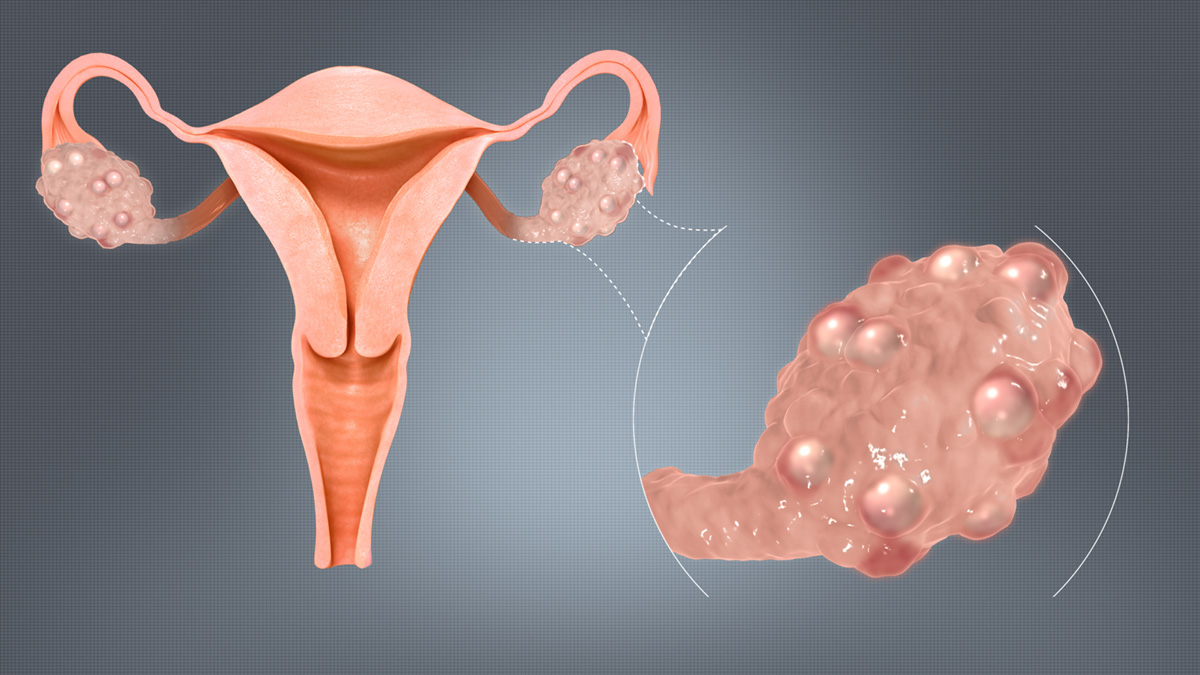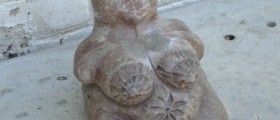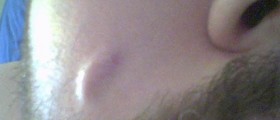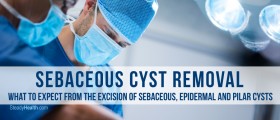
Ovarian cysts represent tiny sacks of fluid inside the female ovaries. They are usually harmless and can disappear on their own.
Women have two ovaries and uterus between them. The egg is located within a follicle. An egg grows and prepares itself for conceiving a baby. If the egg is not fertilized that month its follicle will burst and everything from the ovary will be discharged through menstruation. However, if a follicle does not burst completely a little bit of fluid can remain forming a cyst.
Doctors divide all cysts into noncancerous or cancerous.
The most common types of cysts are functional or simple cyst. Nearly one quarter of all women experienced such cysts at one point in life. There is only water and a thin wall inside a functional cyst. They are completely being the most probable cause of creating simple ovarian cysts is stress and emotional problems.
Follicular cysts are a subtype of simple cysts that occurs during the ovulation period. If they burst a woman will experience sharp pain in ovary. Even though they are harmless and usually cure on their own, it is advisable to visit your doctor. He or she will then tell you whether to take a certain medicine or not.
Corpus luteum cysts are another type of functional cysts. They can be created from follicle after the egg goes out.
Hemorrhagic cysts are a type of functional cysts which beside water contain blood.
Dermoid cysts are usually present among the younger women. They are a type of benign tumor. They contain fat and sometimes even bone, hair, and cartilage. They usually grow up to 6 inches and can become inflamed. If they are twisted they cause huge pain and cramps.
Endometriomas or endometrioid cysts are created when endometrial tissue grows into ovary. This condition can be followed by infertility and constant pain during menstruation.
Polycystic-appearing ovary is a condition when one ovary is double sized of the healthy one and full of small cysts.
Polycystic ovarian syndrome (PCOS), is more serious disease than polycystic-appearing ovary. Its symptoms include polycystic-appearing ovary along with diabetes, high blood pressure, severe bleeding during period, infertility or complications with pregnancy, psychological problems etc.
Cystadenoma is being tumor on ovary. It is made from its own tissue.
Women that have functional cysts usually have no symptoms whatsoever. When examined they will find out that they have cysts on their ovary.
However if your cysts grow too large or if they burst due to any cause you can experience sharp pain especially during sexual intercourse, traces of blood between periods, irregular periods, infertility and so on. If you experience strong pain in your ovaries, high temperature or nausea there is a chance that your cyst ruptured and get infected. In such cases visit your doctor as soon as possible.
During the examination at gynecologist, if a woman has polycystic ovary, she will feel pain or discomfort during routine examination. The doctor will then set a diagnose using ultrasound or in some cases laparoscopy. In ultrasound, polycystic ovary will look like it has many bubbles inside. Sometimes a doctor will take a sample from your cervix and send it to laboratory.

















Your thoughts on this
Loading...